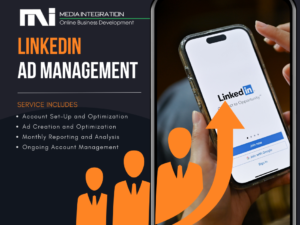Greetings, Aspiring Entrepreneurs and Home-Based Heroes!
Are you poised to unlock a realm of possibilities right from the comfort of your abode? Imagine wielding the power to transform your passions, skills, or hobbies into a wellspring of income, all while embracing your family’s moments. Welcome to the captivating domain of home-based businesses – a fertile ground where dreams flourish and financial growth becomes reality.
A home-based business offers more than just financial autonomy; it’s your gateway to sustained freedom without parting ways with the warmth of your dwelling. Picture being present for your kids’ soccer games, school activities, or savoring a tranquil cup of coffee in your cozy nook, all while making strides in your entrepreneurial journey.
Of course, let’s keep it candid. As with any venture, home-based businesses come with their share of peaks and troughs. On one hand, you’re the master of your schedule, the architect of your destiny, and the pursuer of your passions. Yet, on the other, you’re choreographing a delicate balance between household chores, family commitments, and business responsibilities – a symphony that might require some fine-tuning, but it’s entirely achievable.
In the chapters to come, we’re diving into the world of home-based businesses. We’ll illuminate the vast expanse of opportunities awaiting you, navigate the intricacies, and equip you with insights for informed decision-making. From business concepts tailored to your lifestyle to strategies that amplify your online presence, we stand by your side.
So, whether you’re a parent nurturing your family’s finances, a professional seeking flexibility, or an individual ignited by dreams and determination, this is your moment. Ready to transform your home into an epicenter of opportunity? Let’s embark on this thrilling journey together, harnessing the potential of home-based business triumph!
Discovering Diverse Home-Based Business Ideas
The sphere of home-based businesses offers a spectrum of prospects aligned with your passions, skills, and ambitions. From straightforward yet impactful ventures to more intricate pursuits, there’s a home-based business concept awaiting your embrace. However, before we plunge into the details, let’s set the context straight – this isn’t an express route to overnight success. It demands unwavering dedication, diligent effort, and a commitment to ongoing growth.
Starting with the basics, if your hands craft wonders and beauty, consider launching a handmade crafts venture. Whether it’s distinctive jewelry, bespoke home embellishments, or handcrafted accessories, there’s an audience eager for your creations. Alternatively, virtual assistance offers accessibility; if you’re organized and proficient in administrative tasks, businesses are on the lookout for virtual support.
Seeking a more advanced path? Web design and graphic services are in high demand as companies strive for a robust online presence. If you’re tech-savvy and creative, this could be your forte. Alternatively, venture into e-commerce through an online store. Platforms like Shopify enable you to market physical or digital products globally.
Remember, each journey demands diligence to flourish. It’s vital to refine your skills, promote your offerings, and establish a formidable online presence. The path to triumph is a voyage requiring your dedication. Whether you’re embracing the realm of handcrafted marvels or diving into the intricate waters of e-commerce, know that your commitment can turn home-based business dreams into tangible success.
Now, let’s transition to the art of finding equilibrium in your home-based business haven.
Mastering Work-Life Balance in Your Home-Based Business Sanctuary
As the lines between work and personal life blur in a home-based setting, effective time management becomes paramount. Embrace the Pomodoro Technique to stay focused during work sprints and take short breaks. Create a designated workspace that mentally signifies the start and end of your workday, promoting a healthier work-life balance.
- Pomodoro Technique:
- Begin by setting a timer, typically for about 25 minutes. During this time, give your full attention to the task at hand – it’s your key to productivity!
- When the timer goes off, take a short break, around 5 minutes, to rest and recharge.
- Repeat this cycle for three or four rounds, and then take a longer break, around 15-30 minutes, to relax.
- Use this technique to increase productivity, maintain focus, and prevent burnout throughout your workday.
- Creating a Designated Workspace:
- Find a dedicated area in your home for work, separate from areas associated with relaxation or personal activities.
- Keep your workspace organized and free from distractions. Remove unnecessary items and keep only the tools and resources you need.
- Set up proper lighting and ensure your chair and desk are ergonomically suitable for long periods of work.
- Personalize your workspace with inspiring or calming elements, such as plants, artwork, or motivational quotes.
- Create clear boundaries with your family or roommates. Let them know that when you’re in your workspace, interruptions are only for emergencies. This way, you can focus and excel!
Implementing the Pomodoro Technique and creating a designated workspace can help you maintain focus, improve productivity, and ensure a healthier work-life balance. Give them a try and see the positive impact they can have on your daily routine!
Strategies to Skyrocket Your Home-Based Business
Content that Resonates:
Craft blog posts, videos, or podcasts that solve your audience’s pain points. For instance, if you’re a fitness enthusiast, share home workout routines and healthy recipes to engage your target audience.
Crafting blog posts, videos, or podcasts that resonate with your target audience is crucial for the success of your home-based business. Here are some tips to help you effectively create content that grabs their attention and keeps them coming back for more:
- Identify Your Target Audience: Before creating any content, it’s important to know who your audience is. Research their demographics, interests, and pain points. This will help you tailor your content to their specific needs.
- Focus on Relevant Topics: Choose topics that are relevant to your audience and align with your niche. Address their pain points and provide valuable solutions. Conduct keyword research to identify popular topics in your industry.
- Craft Engaging Headlines: Your headline is the first impression readers have of your content. Make it captivating and compelling. Use power words, numbers, and question formats to grab attention and entice readers to click.
- Tell a Story: People connect with stories. Share personal anecdotes, case studies, or examples that relate to your audience’s experiences. This will make your content relatable and engaging.
- Provide Actionable Advice: Offer practical tips, step-by-step guides, or actionable takeaways in your content. Share your expertise and provide solutions to help your audience achieve their goals.
- Use Visuals to Enhance Your Content: Incorporate relevant images, infographics, or videos to make your content visually appealing and easier to understand. Visuals can help break up text and keep readers engaged.
- Keep it Concise and Readable: Make your content scannable by using headings, subheadings, and bullet points. Keep paragraphs short and use plain language. Use a conversational tone to connect with your audience.
- Include Call-to-Actions: Encourage your audience to take action at the end of your content. This can be subscribing to your newsletter, leaving a comment, sharing the content on social media, or exploring related articles.
- Engage with Your Audience: Respond to comments, messages, and feedback from your audience. Engage in conversations, ask for their opinions, and encourage them to share their experiences. This will create a sense of community and loyalty.
- Analyze and Improve: Regularly analyze the performance of your content. Look at metrics like views, engagement, and conversions. Use this data to identify what works and what needs improvement. Experiment with different formats and strategies.
By implementing these tips, you can craft blog posts, videos, or podcasts that resonate with your target audience, establish your expertise, and build a loyal following for your home-based business. Happy creating!
Social Media Power:
When it tailoring your social media strategy, it’s essential to focus on platforms that are relevant to your niche and target audience. This approach allows you to maximize your efforts and connect with potential customers in a more meaningful way.
For example, if you’re a graphic designer, platforms like Instagram and Pinterest can serve as invaluable tools to showcase your portfolio and creative work. With their visual nature and emphasis on aesthetics, these platforms provide the perfect environment to highlight your design skills, share your artwork, and engage with a community of like-minded individuals.
On Instagram, you can create a visually appealing profile that captures the essence of your design style and showcases your best work. Utilize the platform’s features such as image carousels, videos, and Stories to provide a variety of content formats that resonate with your audience. Additionally, remember to use relevant hashtags and engage with your followers to foster a sense of community and attract potential clients.
Pinterest, on the other hand, is an excellent platform for curating inspirational content and organizing it into different boards. You can create boards specific to different design categories such as logo design, branding, typography, or UI/UX, and populate them with images and ideas that reflect your unique design perspective. By sharing valuable and visually appealing content, you can establish yourself as an authority within your niche and attract a dedicated following.
Remember, the key to a successful social media strategy is not just posting regularly but also engaging with your audience. Respond to comments, participate in relevant discussions, and share valuable insights to build meaningful connections. By consistently showing up and providing value, you can establish yourself as a go-to resource and ultimately attract potential clients who are attracted to your expertise and creativity.
In summary, to make the most of your social media efforts, tailor your strategy to platforms that align with your niche. Leverage Instagram and Pinterest as powerful tools to showcase your design work, build a community, and connect with potential clients. Stay consistent, engage with your audience, and provide valuable content to stand out in the competitive world of social media marketing.
Forge Virtual Connections:
Attend virtual conferences, webinars, and Facebook groups within your industry. Networking can unearth collaborations, partnerships, and valuable insights.
Attending virtual conferences, webinars, and joining Facebook groups can offer numerous benefits for networking and collaboration within your industry. Here are some additional insights on how these platforms can help you:
- Networking Opportunities: Virtual conferences, webinars, and Facebook groups provide excellent opportunities to connect with like-minded individuals, industry experts, and potential collaborators. These platforms gather professionals from various backgrounds, allowing you to expand your network and establish valuable connections.
- Knowledge Exchange: These online platforms offer a wealth of knowledge and educational resources. You can attend presentations, panel discussions, and workshops conducted by industry leaders who share their expertise and insights. By actively participating in these events, you can broaden your knowledge, gain new perspectives, and stay updated with the latest trends and developments in your field.
- Collaborative Projects: Virtual conferences, webinars, and Facebook groups are fertile grounds for collaborative projects. You can connect with individuals who complement your skill set and expertise, fostering collaborations that lead to innovative projects, joint ventures, and mutually beneficial partnerships. These platforms provide a space for brainstorming, discussing ideas, and finding potential collaborators for your projects.
- Peer Support and Mentoring: Engaging in these online communities allows you to seek guidance, support, and mentorship from experienced professionals in your industry. You can connect with mentors who have already achieved success in the field and learn from their experiences. Moreover, you can form relationships with peers who are facing similar challenges, creating a supportive environment where you can share insights, seek advice, and overcome obstacles together.
- Visibility and Branding: By participating in virtual conferences, webinars, and Facebook groups, you can increase your visibility and enhance your personal brand. Actively engaging in discussions, sharing your expertise, and contributing valuable insights can establish you as an authority in your field. This can lead to recognition, opportunities for speaking engagements or guest appearances, and ultimately attract potential clients or customers.
- Marketplace Insights: Attending virtual conferences and webinars can provide valuable insights into the current market trends, consumer behavior, and emerging opportunities. Keynote speakers, industry experts, and panel discussions often highlight market insights, strategies for business growth, and future predictions, giving you a competitive edge in optimizing your home-based business to align with market demands.
- Access to Exclusive Resources: Virtual conferences and webinars often provide access to exclusive resources such as downloadable materials, e-books, templates, and tools. These resources can provide valuable guidance and practical solutions for your home-based business. Additionally, networking within Facebook groups can result in knowledge-sharing and resource recommendations from fellow members.
- Professional Development: Participating in virtual conferences, webinars, and Facebook groups demonstrates your commitment to professional development. It showcases your eagerness to learn, grow, and expand your skill set. By continuously investing in your own growth and staying abreast of industry advancements, you position yourself as a dedicated professional and open doors to further career opportunities.
Remember, virtual conferences, webinars, and Facebook groups offer a unique platform for networking, collaboration, and professional growth. By actively engaging in these online communities, you can amplify your knowledge, forge meaningful connections, and position yourself for success in the realm of home-based businesses.
Email Magic:
Utilize email marketing to nurture relationships with potential and existing customers. Share valuable insights, exclusive offers, and personalized content.
The Power of Personalized Email Marketing
Personalized email marketing is a powerful tool for nurturing relationships with your potential and existing customers. It allows you to connect with your audience on a more personal level, providing them with tailored content that resonates with their needs and interests.
Here are a few reasons why personalized email marketing is important:
- Enhanced Engagement: When you send personalized emails to your subscribers, you demonstrate that you understand their unique preferences and challenges. This leads to increased engagement as your audience is more likely to open, read, and interact with emails that are relevant to them.
- Improved Conversion Rates: Personalized emails have higher conversion rates because they provide targeted information that addresses your audience’s specific pain points or interests. By delivering valuable content tailored to each subscriber, you can guide them through the buyer’s journey and encourage them to take desired actions, such as making a purchase or signing up for a webinar.
- Building Trust and Loyalty: Personalization shows your subscribers that you care about their individual needs. When you consistently deliver valuable and relevant content, you build trust and credibility, which in turn fosters long-term loyalty. Personalized emails can also help you establish a stronger brand connection, making your subscribers feel valued and understood.
- Increased Customer Retention: By segmenting your email list and sending targeted messages to different groups of subscribers, you can nurture customer relationships and increase retention. This allows you to stay top-of-mind with your audience and provide ongoing value, reducing the likelihood of them opting out or unsubscribing.
- Data-Driven Insights: Personalized email marketing allows you to gather valuable data on your subscribers’ behavior, preferences, and interests. By analyzing this data, you can gain insights into what resonates with your audience, enabling you to optimize your future campaigns and tailor your offerings to better meet their needs.
Now that you understand the importance of personalized email marketing, let’s explore some examples of valuable content you can share:
- Exclusive Offers or Discounts: Reward your subscribers with exclusive discounts or offers tailored specifically to their preferences or past purchases. This makes them feel special and encourages them to take advantage of the offer.
- Curated Content: Share curated content from your industry that your subscribers would find valuable. This can include blog posts, articles, videos, or podcasts that provide insights, tips, or educational resources. Be sure to customize the content based on their interests or pain points.
- Product Recommendations: Based on your subscribers’ past purchases or browsing behavior, recommend relevant products or services that they may be interested in. Highlight the key features or benefits and offer them an exclusive discount or incentive to make a purchase.
- Educational Content: Provide valuable educational content that addresses common pain points or challenges your audience may face. This can take the form of how-to guides, tutorials, checklists, or step-by-step instructions that help them overcome obstacles and achieve their goals.
- Personalized Event Invitations: If you’re hosting webinars, workshops, or virtual events, send personalized invitations to your subscribers who have shown interest in similar topics in the past. Highlight the value they will gain from attending and provide an easy way for them to register or save their spot.
- Birthday or Anniversary Rewards: Remember your subscribers’ birthdays or anniversaries and send personalized emails with special rewards, discounts, or freebies. This gesture shows them that you care about their milestones and appreciate their continued support.
- Survey or Feedback Requests: Engage your subscribers by seeking their input through surveys or feedback requests. This not only helps you gather valuable insights about their preferences but also makes them feel involved and valued in shaping the future of your business.
Remember, personalization goes beyond simply addressing your subscribers by their first name. It involves understanding their preferences, behavior, and interests to deliver content that truly resonates with them. By investing in personalized email marketing and providing valuable content, you can build stronger connections, increase engagement, and drive better results in your home-based business.
SEO Unleashed:
Harness the power of SEO by incorporating relevant keywords into your website content. This boosts your website’s visibility and draws organic traffic.
When it comes to SEO optimization, incorporating relevant keywords into your website content plays a crucial role in improving your website’s visibility and attracting organic traffic. Here is a step-by-step process to help you effectively incorporate keywords into your website content:
- Keyword Research: Start by conducting thorough keyword research to identify the most relevant and valuable keywords for your website. Use keyword research tools like Google Keyword Planner, SEMrush, or Moz to discover keywords with high search volumes and low competition. Consider long-tail keywords that are specific to your niche and target audience.
- Identify Primary and Secondary Keywords: Once you have a list of potential keywords, identify primary and secondary keywords for each page or piece of content on your website. Primary keywords are the main focus of the page, while secondary keywords are related terms or variations that support the primary keyword.
- Content Structure and Organization: Determine the structure and organization of your content based on your primary and secondary keywords. If you’re writing a blog post, for example, plan your headings, subheadings, and sections to align with your keywords. This helps search engines understand the relevance and context of your content.
- Title Tag Optimization: Your page’s title tag is one of the most important places to include your primary keyword. Craft a concise and compelling title that accurately describes the content and incorporates the keyword naturally. Aim for a title length of 50-60 characters to ensure it displays fully in search engine results.
- URL Optimization: Optimize your page’s URL by including your primary keyword. Keep the URL structure clean and concise, excluding unnecessary characters or numbers. For example, if your primary keyword is “home-based business ideas,” a well-optimized URL could be “examplewebsite.com/home-based-business-ideas”.
- Meta Description Optimization: The meta description is a brief summary that appears below the title tag in search engine results. While it doesn’t directly impact search rankings, a well-crafted meta description can entice users to click on your page. Include your primary keyword and make it compelling and informative within the recommended length of 150-160 characters.
- Header Tags: Use header tags (H1, H2, H3, etc.) to structure your content and signal to search engines what the main topics and subtopics are. Include your primary and secondary keywords naturally within these header tags to show their relevance to the content.
- Keyword Placement in Content: Incorporate your primary and secondary keywords naturally throughout your content. Aim for a balanced distribution, ensuring your keywords fit contextually and do not appear forced. Use variations and synonyms of your keywords to make your content more diverse and comprehensive.
- Image Optimization: Optimize your images by giving them descriptive file names and using alt tags that include your primary keyword. This helps search engines understand the content of your images and improves accessibility.
- Internal and External Linking: Incorporate internal links within your content to connect relevant pages on your website. Use anchor text that includes your keywords to provide contextual relevance. Additionally, include external links to reputable sources related to your content. This shows search engines that your content is well-researched and provides value to users.
- User Experience and Readability: Ensure that your content is user-friendly and easy to read. Use short paragraphs, bullet points, and subheadings to break up your content and make it scannable. This enhances the user experience and encourages visitors to spend more time on your website, which positively impacts SEO.
- Regularly Update and Optimize: SEO is an ongoing process, so regularly update your content and optimize it based on changing trends and search engine algorithms. Monitor keyword rankings and make adjustments as necessary to maintain or improve your website’s visibility.
Remember, the goal is to incorporate keywords naturally and provide valuable, high-quality content that meets the needs of your target audience. By following this process, you can enhance your website’s SEO optimization and increase its chances of ranking higher in search engine results.
Navigating Finances with Ease in your Home-Based Business
- Accounting Software: Streamline financial management with tools like QuickBooks or FreshBooks. These accounting platforms are your virtual financial assistants, simplifying the often daunting task of tracking expenses, generating invoices, and calculating taxes. Say goodbye to cumbersome spreadsheets and hello to organized financial records. With user-friendly interfaces, you don’t need to be a financial whiz to make the most of them. Stay on top of your income and expenses effortlessly, allowing you to make informed decisions and focus more on growing your business.
- Outsourcing Marvels: Imagine having a team at your fingertips without the need for a physical office. Outsourcing platforms like Upwork and Fiverr bring this dream to life. Need a logo? A blog post? A marketing campaign? You can find freelancers skilled in various fields, ready to tackle tasks beyond your expertise. Delegating projects not only frees your time but also infuses your business with fresh perspectives and ideas. Plus, you pay for the work done, avoiding the costs associated with hiring full-time employees. It’s like having a virtual Swiss Army knife for your business needs.
- Scaling Tools: As your home-based business blossoms, maintaining organization becomes vital. This is where project management tools like Trello or Asana step in. They’re like your digital assistants, keeping your projects, tasks, and deadlines in perfect harmony. With features like customizable boards, task assignments, and progress tracking, you can manage projects and teams from the comfort of your home. As you expand, these tools ensure that nothing falls through the cracks. Collaboration becomes smoother, and your business remains agile and adaptable.
By incorporating these financial and operational aids, you’re not just managing a home-based business – you’re orchestrating a symphony of success, all while enjoying the comforts of your own space.
Resources for Your Entrepreneurial Journey
- QuickBooks: Manage your finances seamlessly with QuickBooks – Link
- Upwork: Find freelancers or offer your services – Link
- Trello: Streamline project management – Link
Conclusion: Your Odyssey Begins Now
Congratulations! You’re armed with insights to dive into the world of home-based businesses confidently. Remember, success thrives on dedication and innovation. By embracing the unique advantages of a home-based venture and implementing savvy strategies, you’re poised to not only achieve your dreams but surpass them. Your journey awaits – it’s time to shine from the comfort of your home.







